With only a quick stop in Barcelona on our way to a relaxing beach apartment, we knew we had to make the most of our time and see just the highlights. On the very top of our list was the Sagrada Familia (translation: Holy Family) – a massive cathedral under construction for 149 years in the heart of the city. It is still under construction, with estimates of completion in 2026.

I’d love to just stop typing now and say in an breathless voice, “it was amazing.” because it’s almost indescribable. But that would not do our readers a good service, and more than that I want to encourage others to go there, so I will push on and type away.
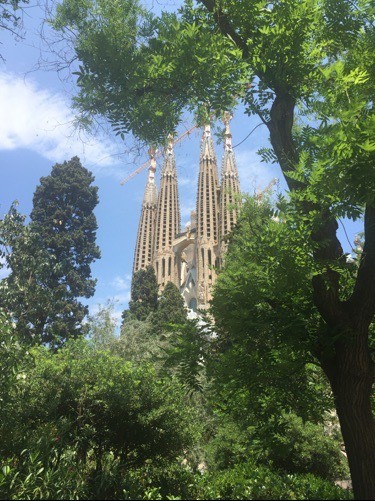
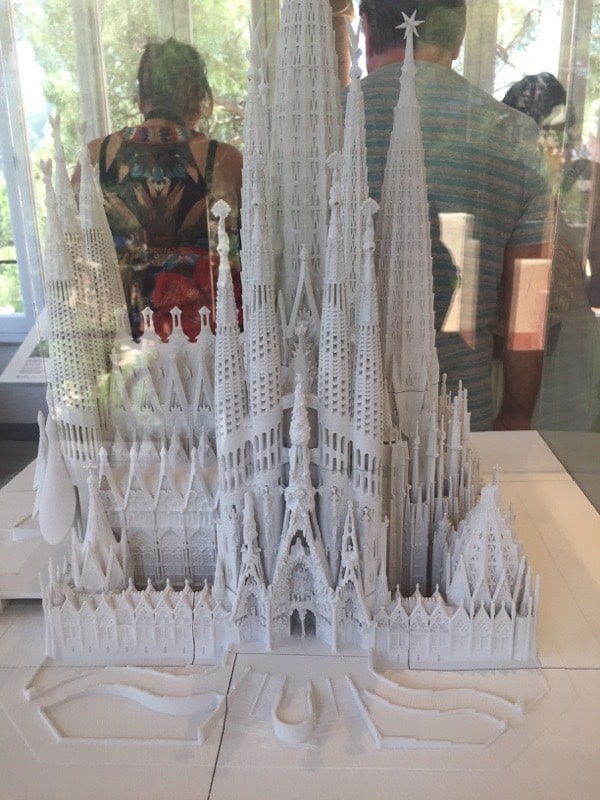
Here’s the history of the structure, thanks to Wikipedia:
Background
The Basilica of the Sagrada Família was the inspiration of a bookseller, Josep Maria Bocabella. After a visit to the Vatican in 1872, Bocabella returned from Italy with the intention of building a church. The apse crypt of the church, funded by donations, was begun 1882 to the design of the architect Francisco de Paula del Villar, whose plan was for a Gothic revival church of a standard form. The apse crypt was completed before Villar’s resignation in 1883, when architect Antoni Gaudí assumed responsibility for its design, which he changed radically.
Construction
Just Wow
This is one of those places where you go thinking you’ll see something amazing and leave thinking you need to spend months researching it, there is just so much to know and learn about it. I had a similar feeling about Al Hambra. After seeing the Sagrada Familia, I wished for another lifetime where I could devote years to studying the meanings behind all the choices the original builders (many of them) made. It was truly jaw-dropping. I can’t possibly go into all the detail but I will give you a glimpse behind the massive symbolism by telling you about the three facades and the towers, all of which I copied from the official website:
Façades
The Church will have three grand façades: the Nativity façade to the East, the Passion façade to the West, and the Glory façade to the South (yet to be completed). The Nativity Façade was built before work was interrupted in 1935 and bears the most direct Gaudí influence. The Passion façade was built according to the design that Gaudi created in 1917. The construction began in 1954, and the towers, built over the elliptical plan, were finished in 1976. It is especially striking for its spare, gaunt, tormented characters, including emaciated figures of Christ being scourged at the pillar; and Christ on the Cross. These controversial designs are the work of Josep Maria Subirachs. The Glory façade, on which construction began in 2002, will be the largest and most monumental of the three and will represent one’s ascension to God. It will also depict various scenes such as Hell, Purgatory, and will include elements such as the Seven Deadly Sins and the Seven Heavenly Virtues.
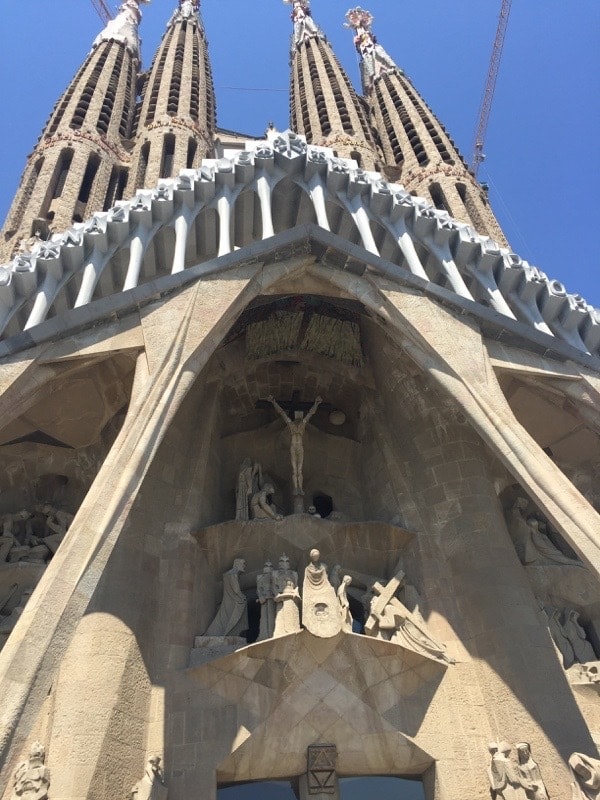


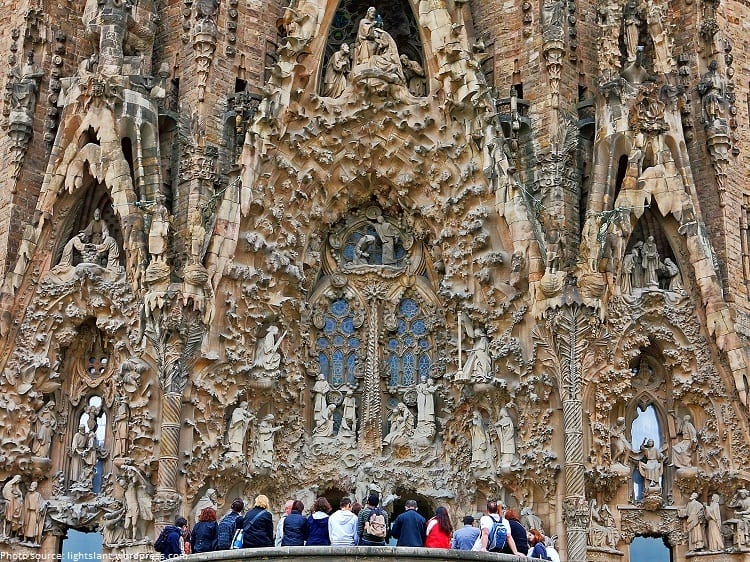

Towers
Gaudí’s conception of the Sagrada Familia was based on the traditions of Gothic and Byzantine cathedrals. His intention was to express Christian belief through the architecture and the beauty of the building and communicate the message of the Evangelists. The various architectural elements are imbued with hierarchically organized Christian symbolism. Thus, each of its 18 towers has a special significance. In the middle is the tower dedicated to Jesus Christ and around it are four towers representing the Gospels; the books containing the life and teachings of Jesus. The tower above the apse, crowned by a star, represents his mother the Virgin Mary, while the remaining 12 towers represent the 12 Apostles, witnesses to his words and deeds.
From wherever they are seen, once finished, these 18 towers will be an extraordinary sight and provide a sense of elevation to the central tower dedicated to Jesus Christ.
This site has some cool facts about the basilica. For example: When La Sagrada Familia is completed, it will be tallest religious building in all of Europe. The central tower in the middle will reach 170 meters tall. Despite having a powerful height, Gaudí believed that nothing man-made should ever be higher than God’s work. It is no coincidence that the ultimate height will be one meter less than Montjuïc, the mountain in Barcelona, which is also the city’s highest point.
Watch This Video
If you do nothing else, just watch this 1-minute video on the construction still to be done on the structure. Some of what is depicted here was already visible to us, such as the Passion Facade, but the massive towers are not yet built. You can see not only how they will dominate above the city around it, but also how much work they still have to do in 10 years. I’m not much for bucket lists but I announced to the whole family that I want to come back when it’s done, even if the kids have to bring me on a stretcher. It was truly amazing already and it’s incomprehensible how amazing it will be when it’s done. I keep trying to come up with an adjective other than “amazing” but nothing else seems right.
Inside Sagrada Familia
It was really hard to take photos. There were a lot of people, the light was streaming in through the beautiful colored windows (on purpose) and everything was so massive you spent most of your time looking up. But we managed to take a few that barely depict the grandness but I’ll post them here anyway.
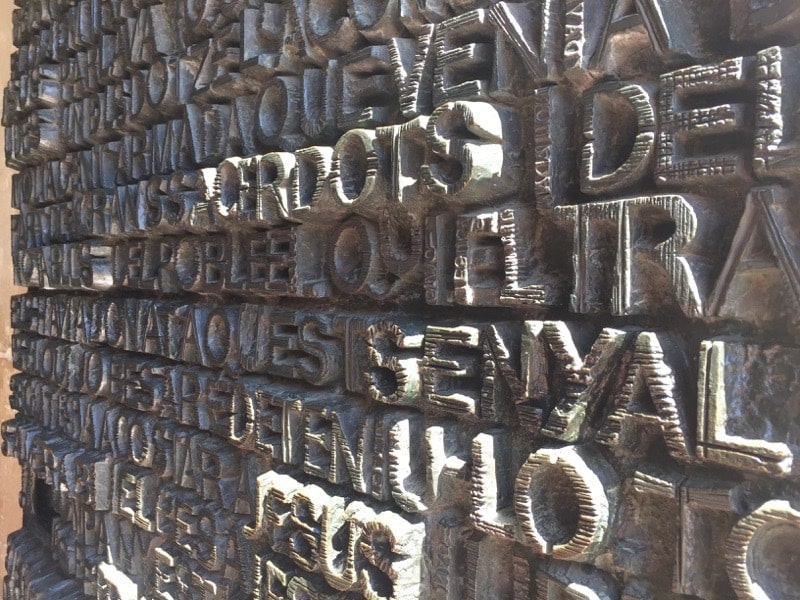
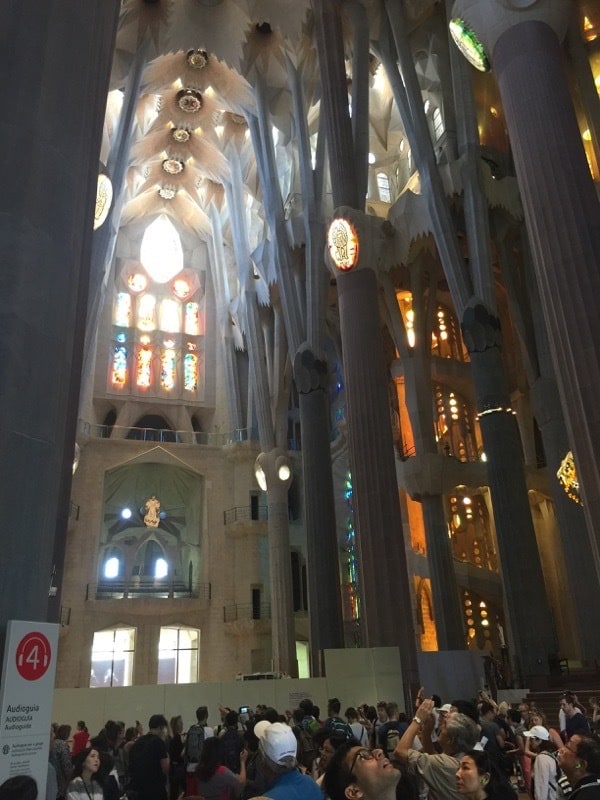

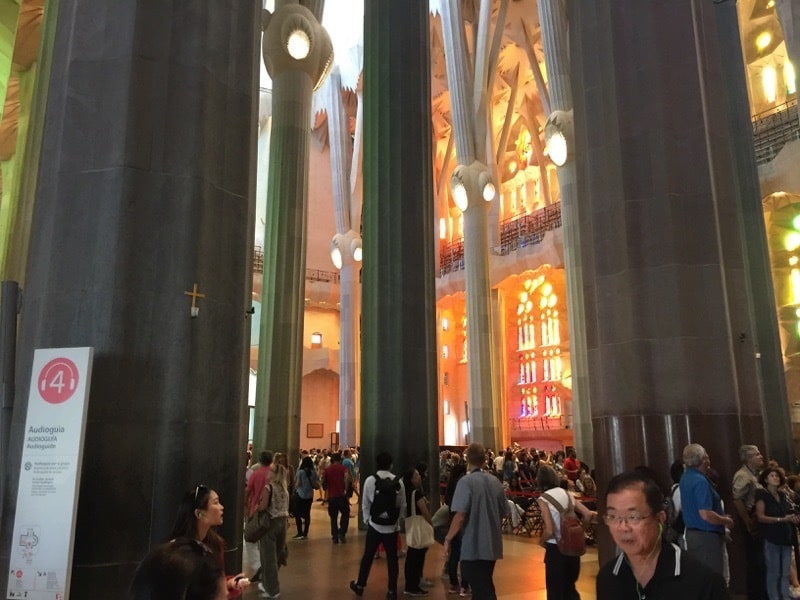
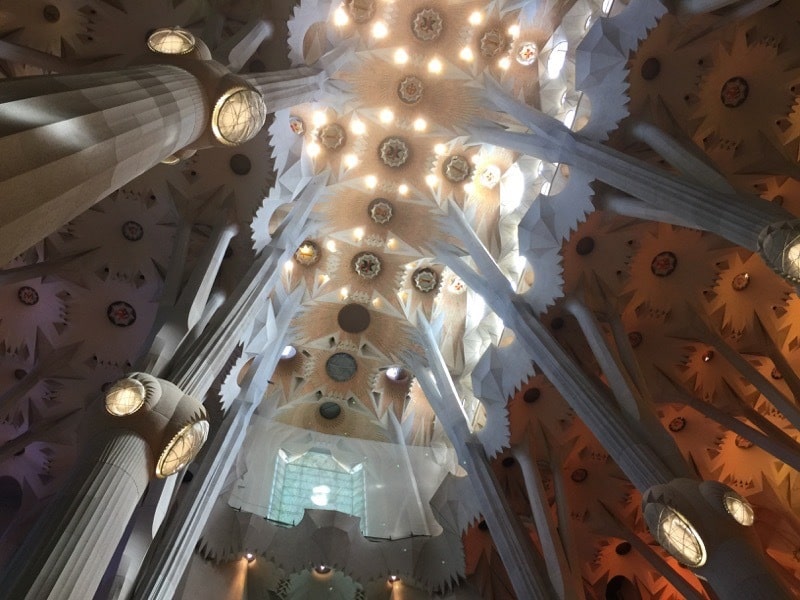
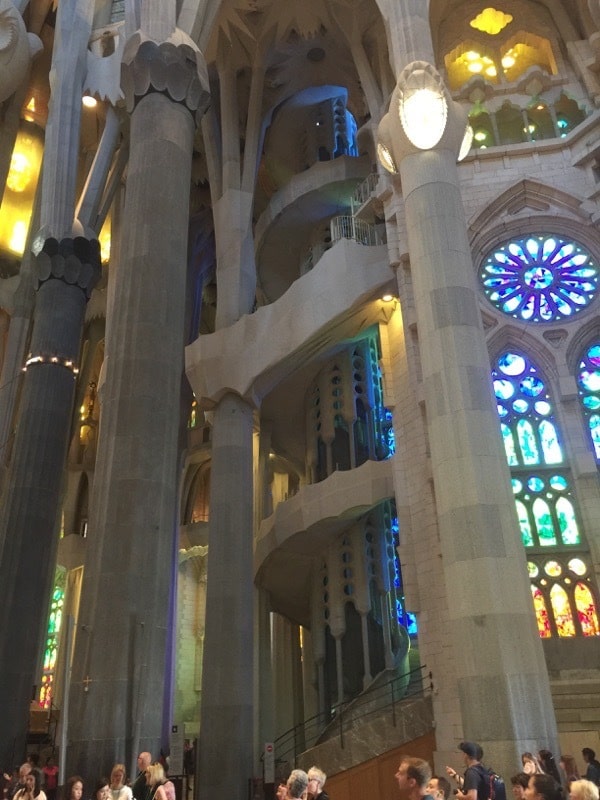
Here’s a 1- minute video Dan took of the inside. I was too busy looking up to take any videos.
Gaudi and Barcelona
Gaudi was pretty prolific. His work can be seen all over Barcelona. On our last full day, we went up to a park up on the mountainside. It was designed to be the central area for an exclusive upscale residence project, and Gaudi was the chief architect on the homes. How in the world did he have time to do all of this!!? In the end, only a few homes were built, as the upper-class citizens of Barcelona felt that the area was too far out of town and did not want to dirty up their carriages on the dusty and muddy road to get up there. Now the park feels like it’s pretty much in the city and after wandering around it, we walked back to our hotel. It was a really nice area with some great views of the city, a very interesting viaduct and a glimpse into Gaudi’s other designs.


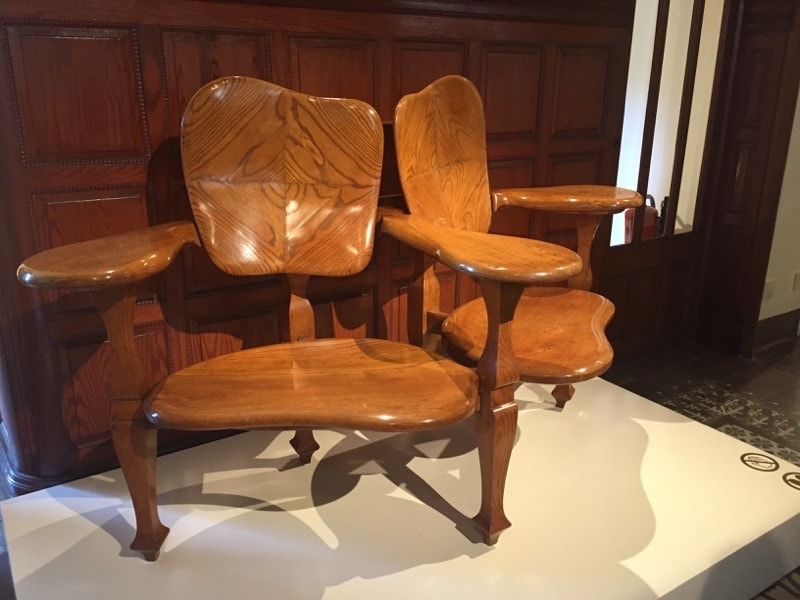
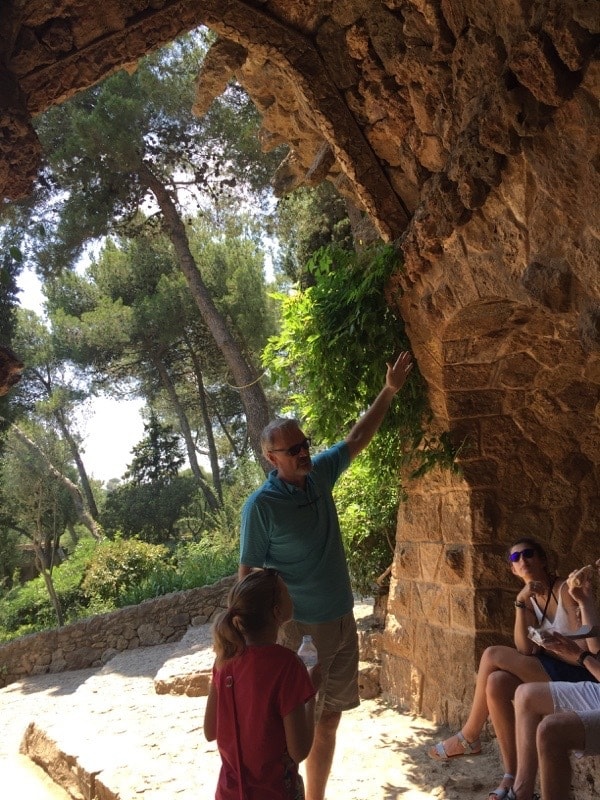
Just Go
I really can’t stress it enough: you should go to Barcelona and see Gaudi’s work. Everyone should go. Just go. Get your tickets ahead of time, get the audio tour, take your camera and just go. I have declared it one of my favorite places on earth.
